Historical background
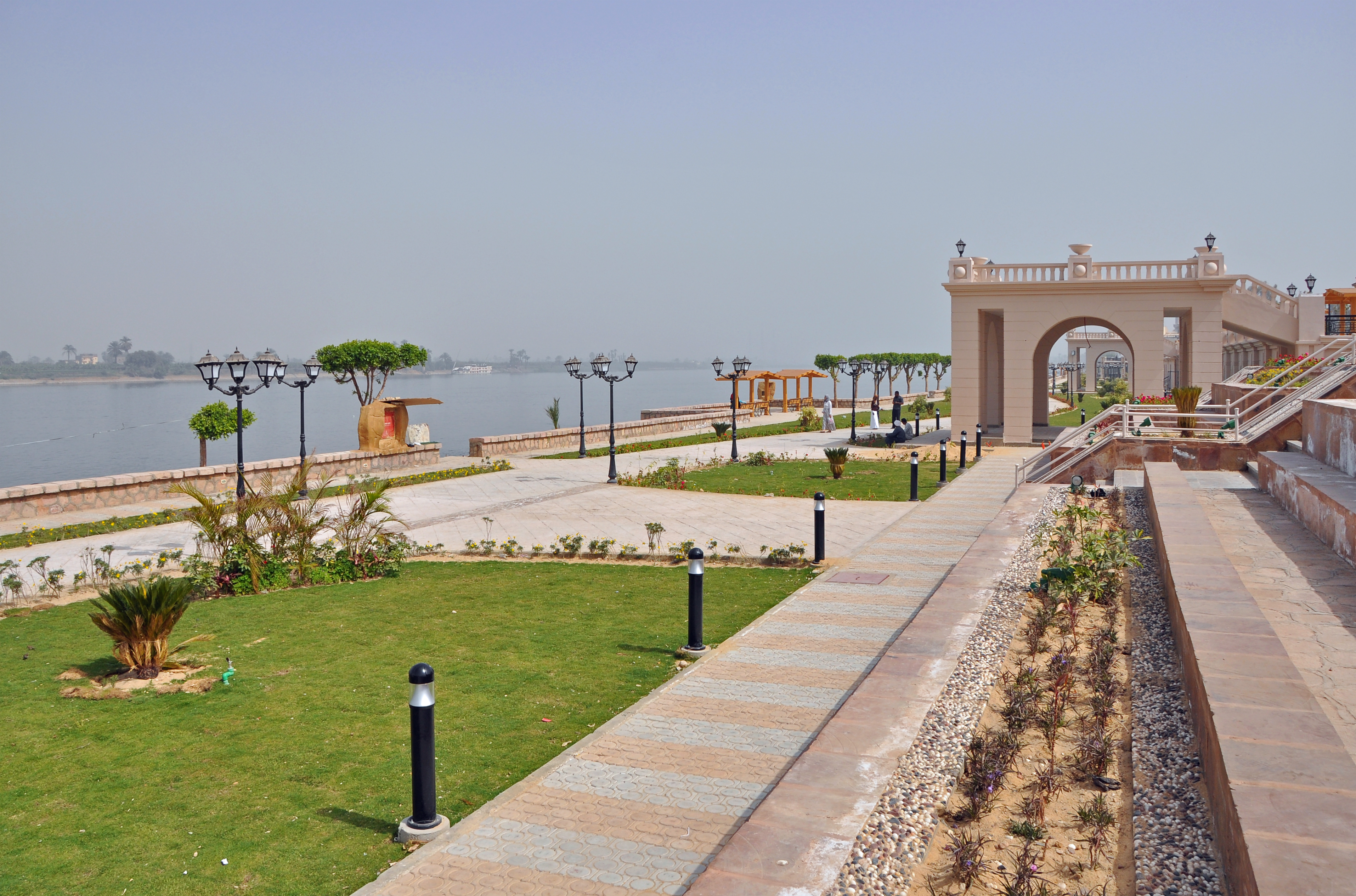
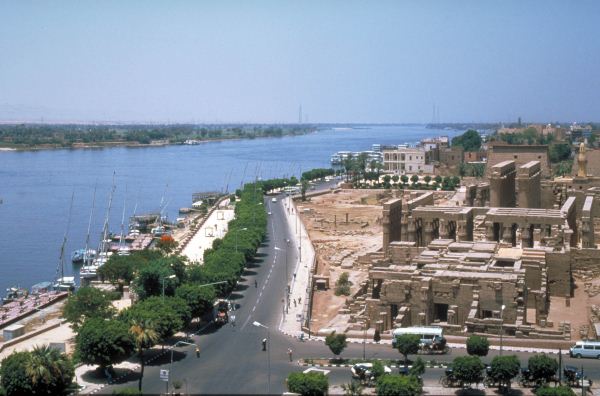
This city has existed since the Ancient Egyptian history called Waset in hieroglyphics languages which meant”city of the scepter”, The Greeks called Thebes and also known as the city of the 100 gates, and nowadays called Luxor which meant the palaces “القصر”.
It was Egypt’s capital and it was the main place to worship the deities of the ancient Egyptian history
Thousands of tourists from all around the world arrive to visit these monuments which are:
Deir el Bahri (Temple of Hatshepsut)
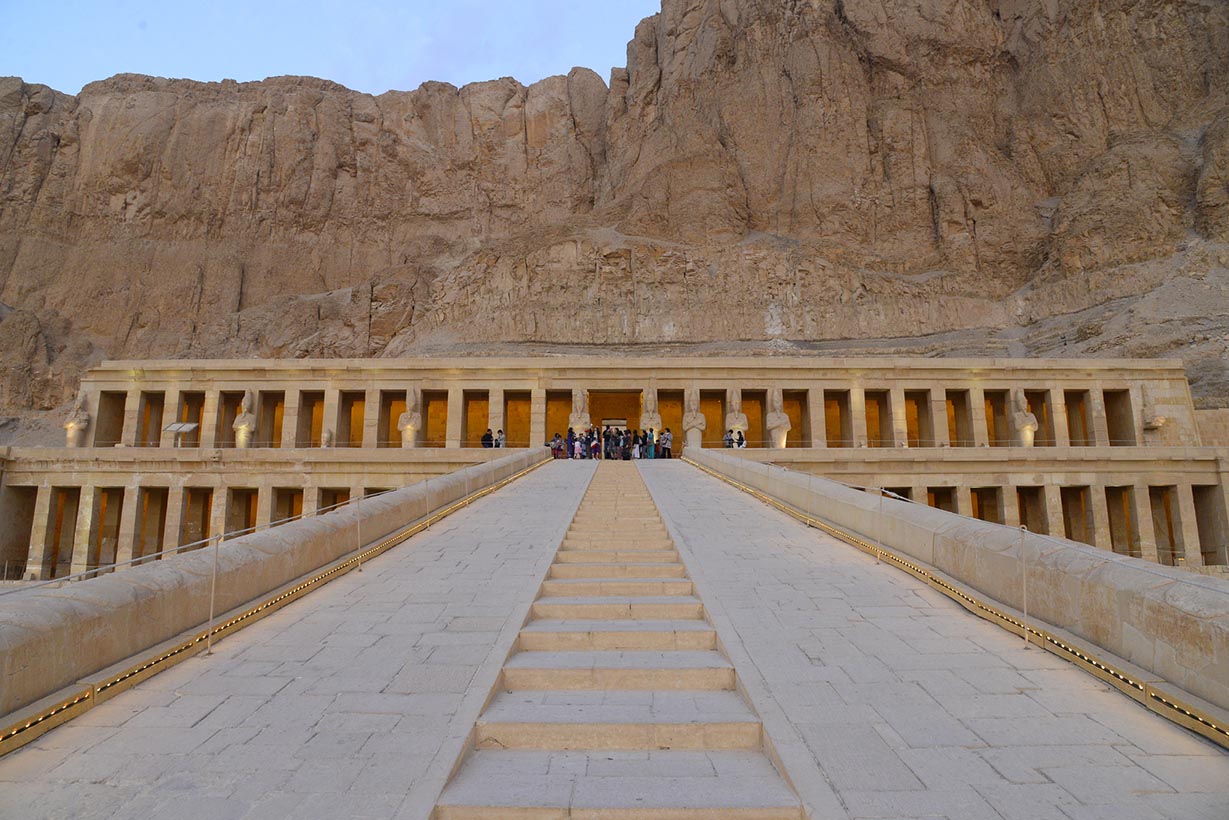
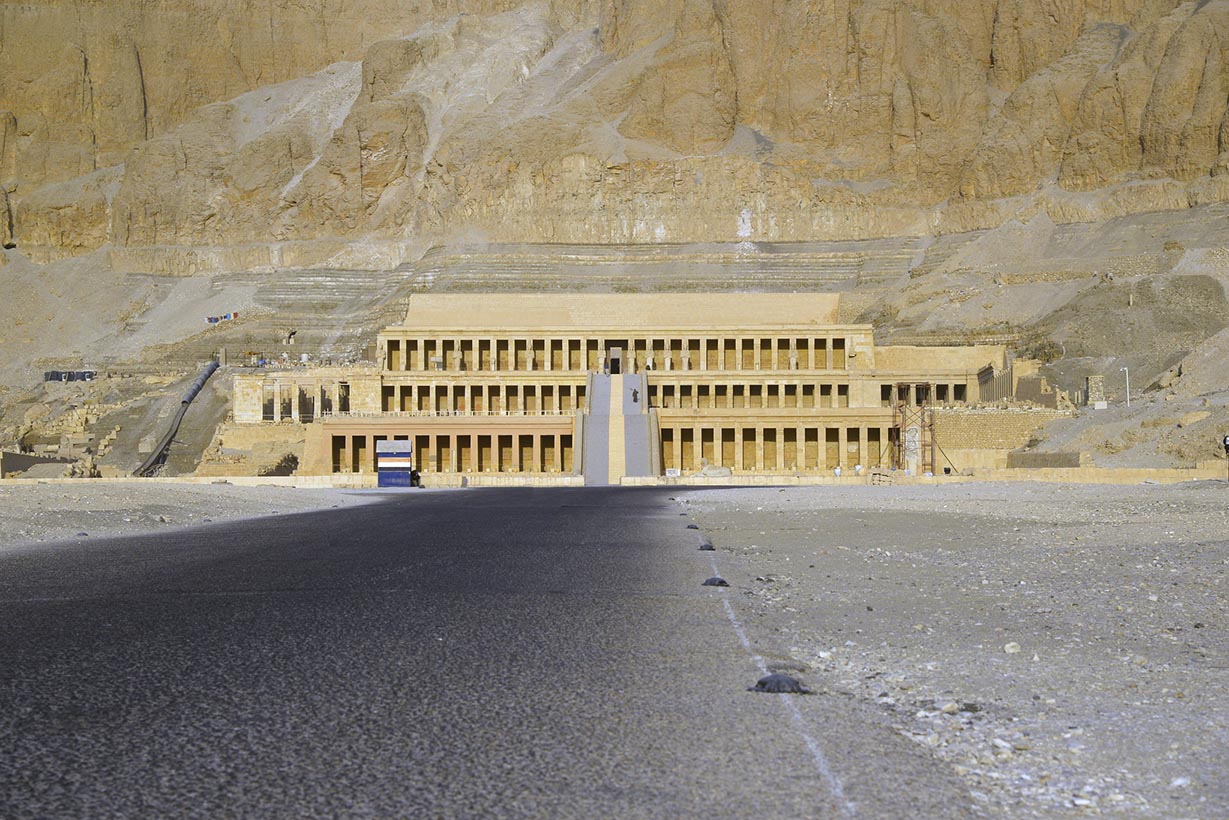
El-Deir EL- Bahri is Known as Djesr Djesru “Holy of Holies” In Ancient Egyptian time, It’s a mortuary temple, which located on the west bank of the Nile, The architect Senenmut was constructed the temple.
The main purpose to build this temple to worship her father “God Amen”.
There are many incredible scenes from Punt Expedition and Hatshepsut’s birth and coronation.
Luxor temple
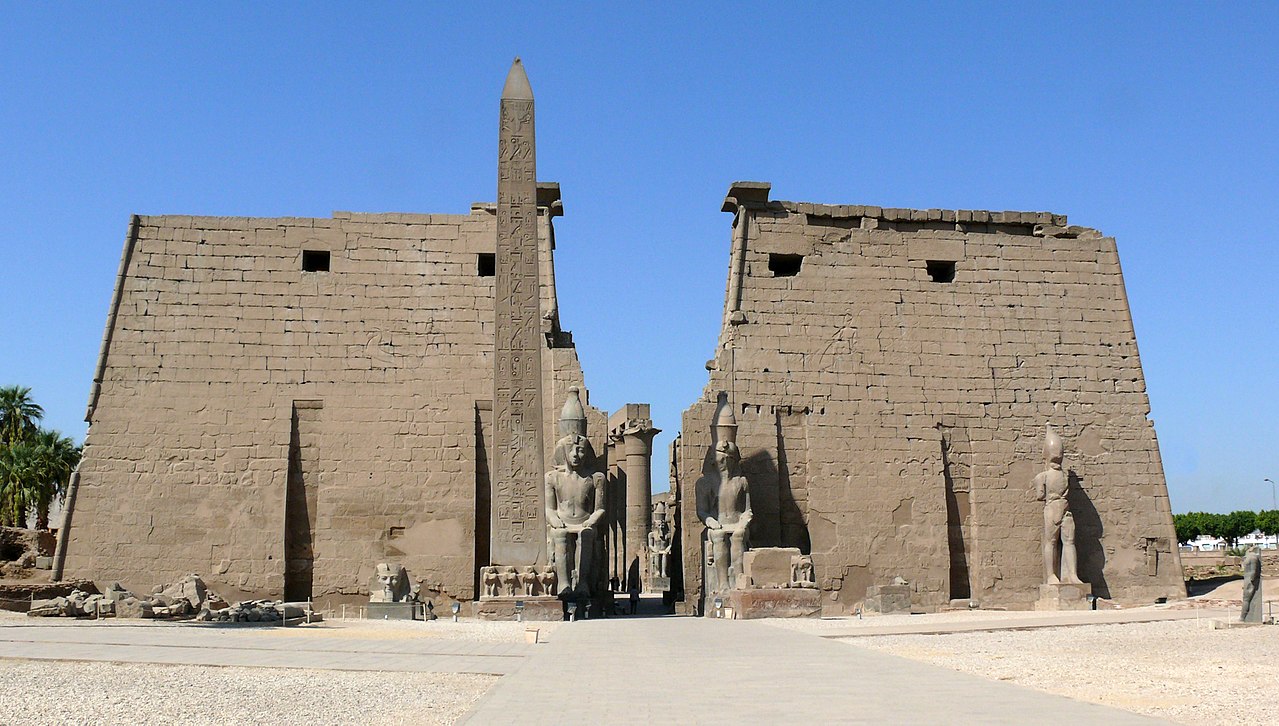
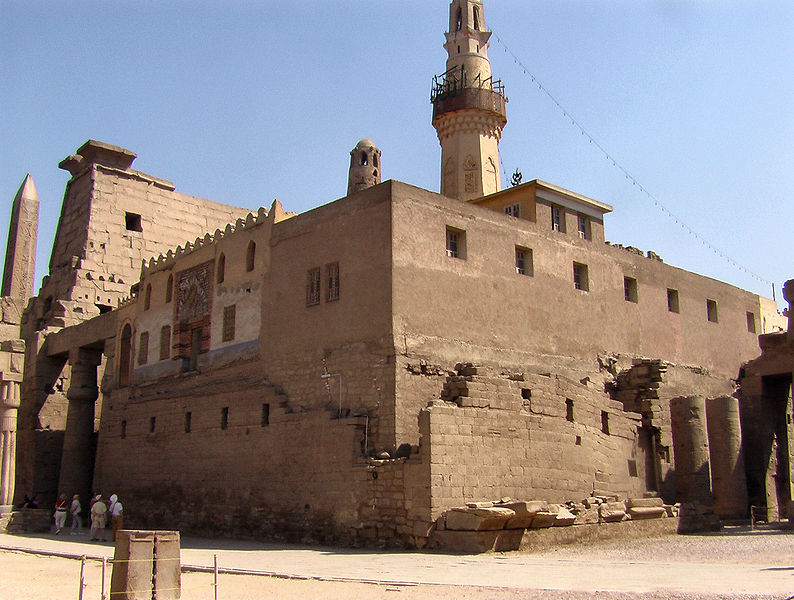
It was called “Ipt ryst” “the southern sanctuary”, located on the east bank of the Nile.
Was dedicated to the Theban Triad (Amen-Ra, Mut, and Khonsu).
People were celebrating by the annual Opet Festival there.
The most important thing that a mosque was built within the temple called the Mosque of Abu El-Hagag but converted to a church in the Roman period.
Karnak Temple
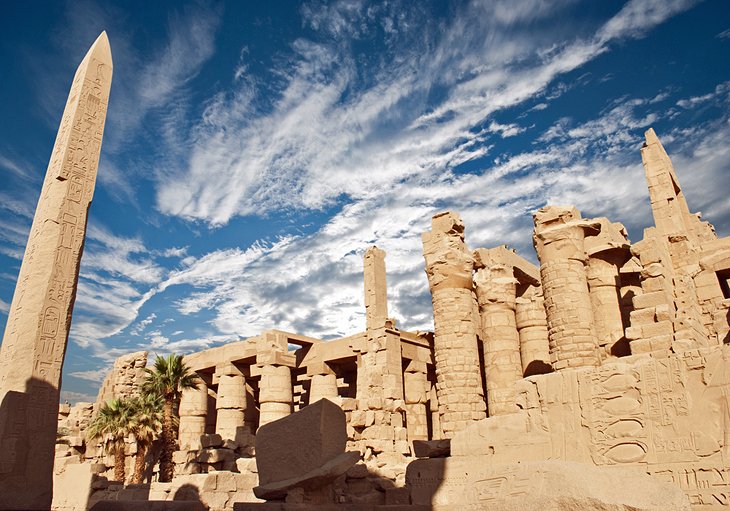
Called Ipt rswt which meant “Most selected Places”, Also Al-Karnak dedicated to (Amen-Ra, Mut, and khnosu), Probably this tour will spend 2h. They were several pharaoh kings all over the ancient periods who collaborated to build this temple, which starts with king Seti I and completed by Ramses II.
Light and sound show, describing the ancient treasures of ancient Thebes, and the pharaohs arise to tell the story of their interesting lives that you can live with them with fantastic colorful presentations.
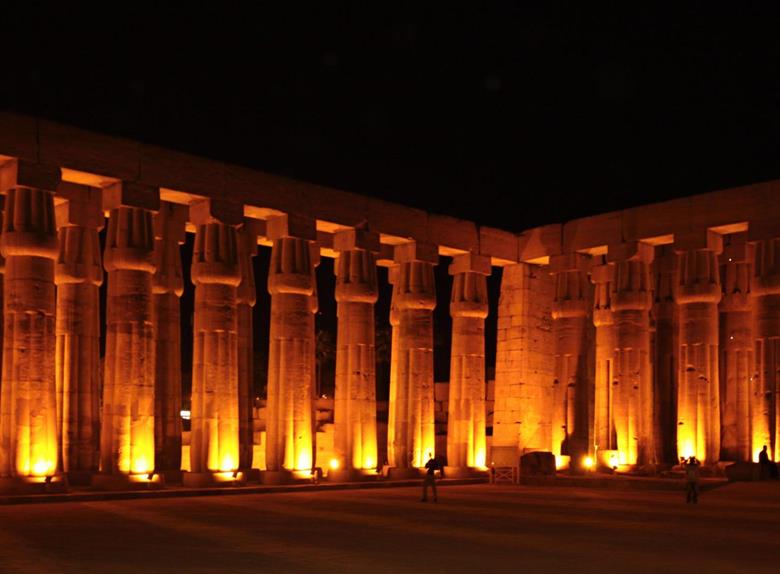
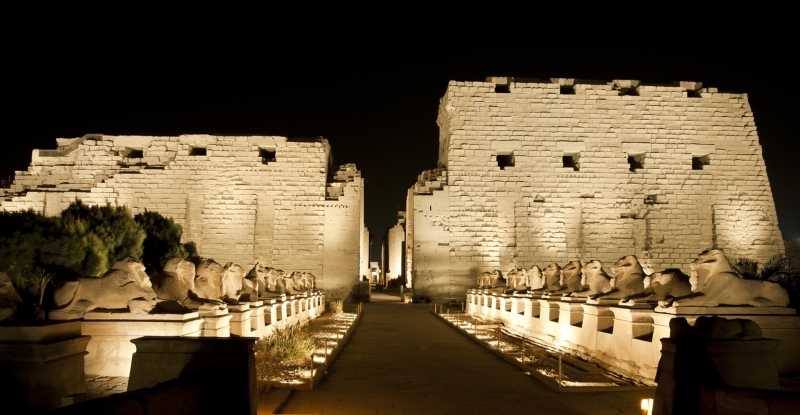
Valley of the Kings and Queens
Valley of the Kings called in Arabic “Waddi El-Melouk” “وادي الملوك”.
Located on the west bank of Luxor along the Nile River.
Those burial tombs were for buried the kings and queens of the royal family and decorated with well and unique paintings and scenes you have ever seen.
Nothing remains but, the tombs consider the most wonderful tombs were: tomb of Tutankhamen, Amenhotep III, and Seti I.
18 of the tombs they are rarely open at the same time, the tour guides are no longer allowed to lecture inside the tombs and visitors are walking in single file through the tombs.
This is to minimize time in the tombs and prevent the crowds from damaging the surfaces of the decoration.
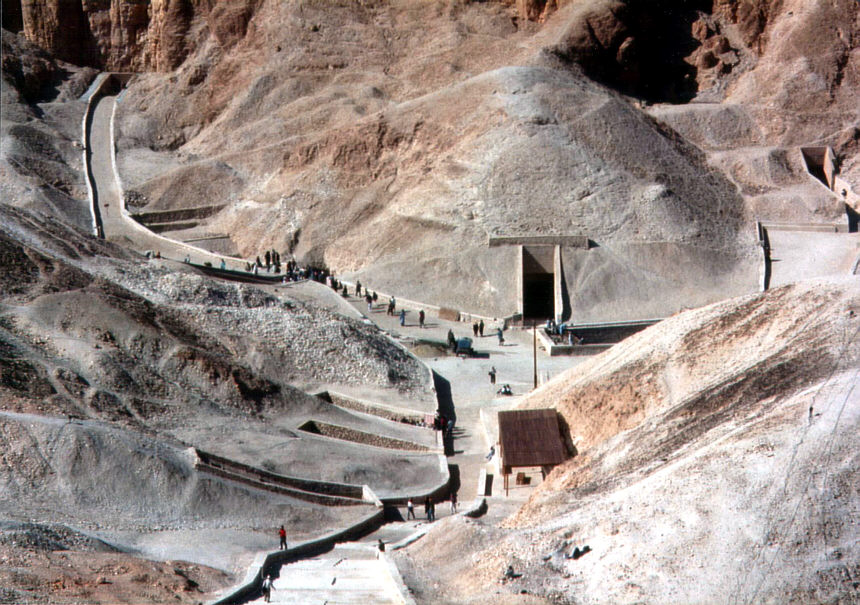
Valley of the queens which called in Arabic “Waddi El-Malekat” “وادي الملكات”, and also was known as “Ta-Set-Neferu” which mean “the place of beauty” because the queens. Princesses of 18th and 20th dynasty and noble people were buried there.
This burial tomb contains the beautiful tombs that distinguish from the magnificent decoration and colorful paintings were: Tomb of Nefertari, and tomb of Sitre, you need a separate ticket to visit this tomb.
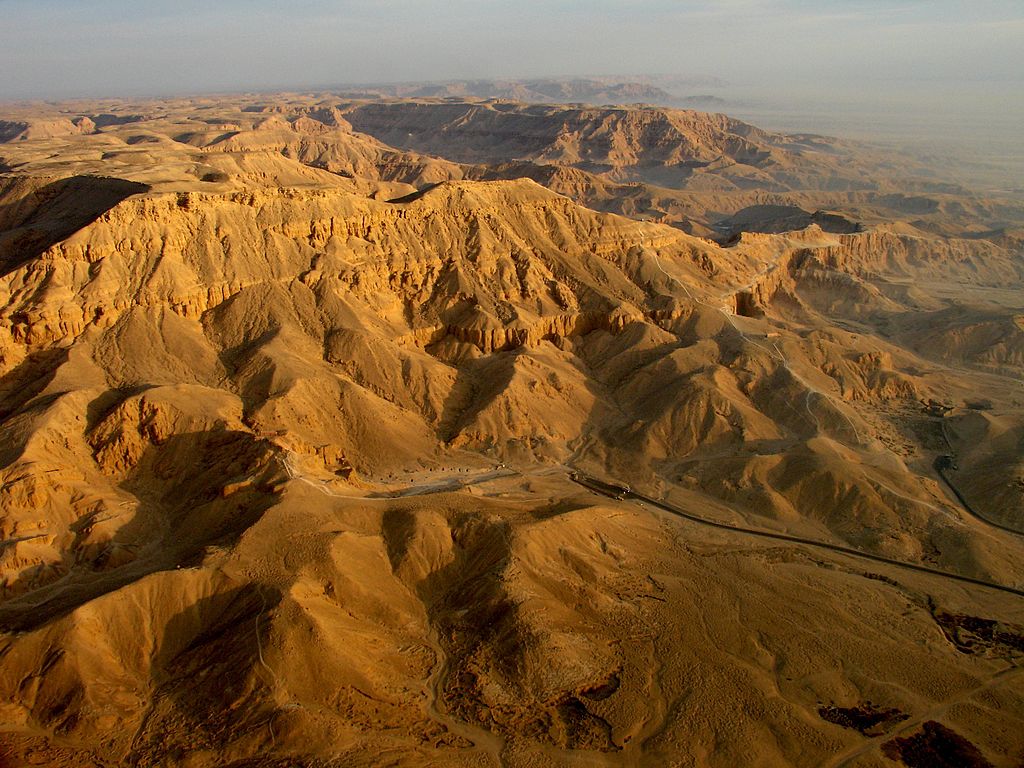
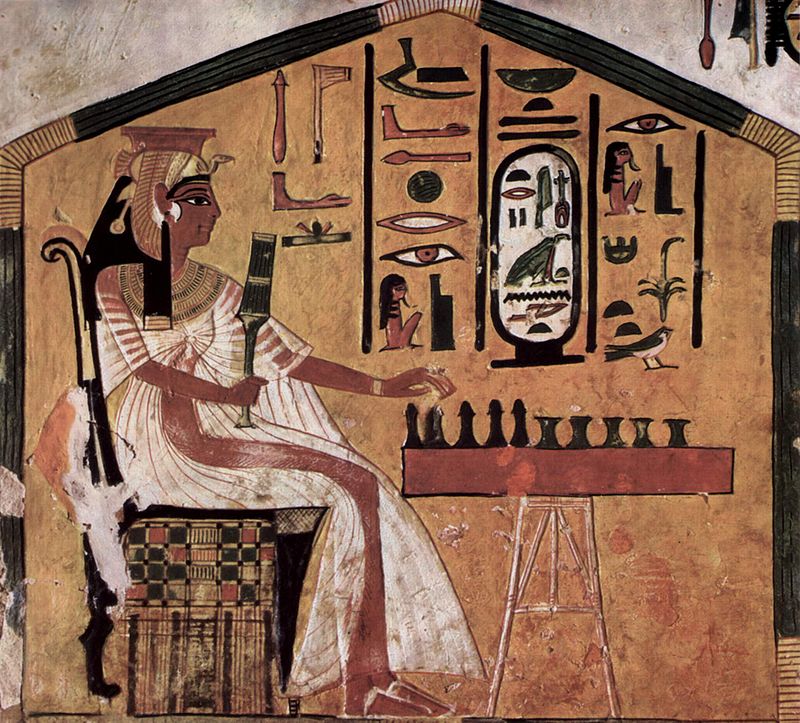
The Mortuary Temple of Ramses III ( Madinat Habu)

The temple located at Madinat habu, Medina means “city,” and Habu is the actual name of the city. It is thus “Habu City”.
This Temple contains decorated wall reliefs. A source of inscribed reliefs depicting the advent and defeat of the Sea Peoples during the reign of Ramesses III.
In fact, if you focus a little bit you will find the scene at the money paper 20 LE same as the temple!
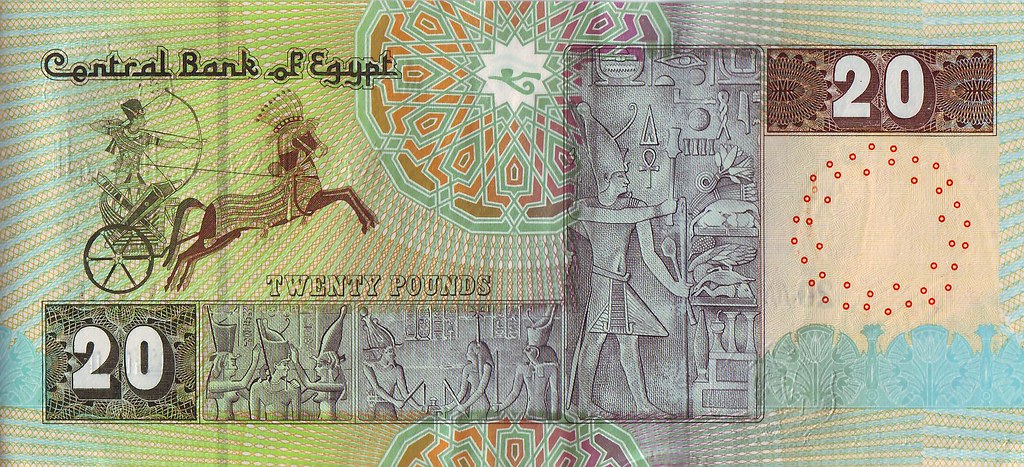
Ramesseum
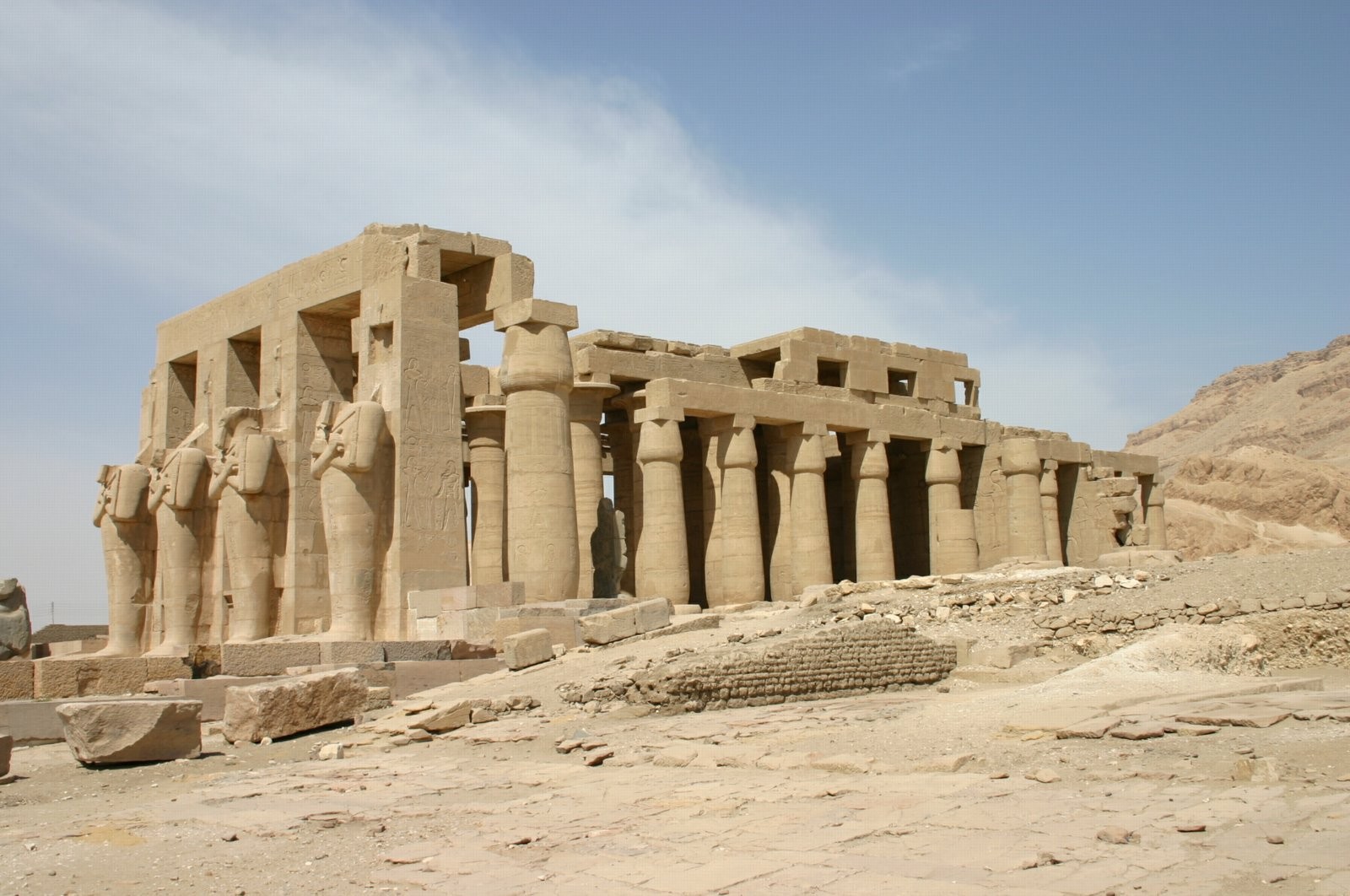
The Temple consider one of the most beautiful temples in Egypt.
It’s a mortuary temple for the king Ramses II; Also called “the House of millions of years”
Contains massive statues of RamsesII, scenes.
And descriptions of the wall reliefs tell about how life was going during his reign for example “battle of Kadesh”.
Dier el-Madina
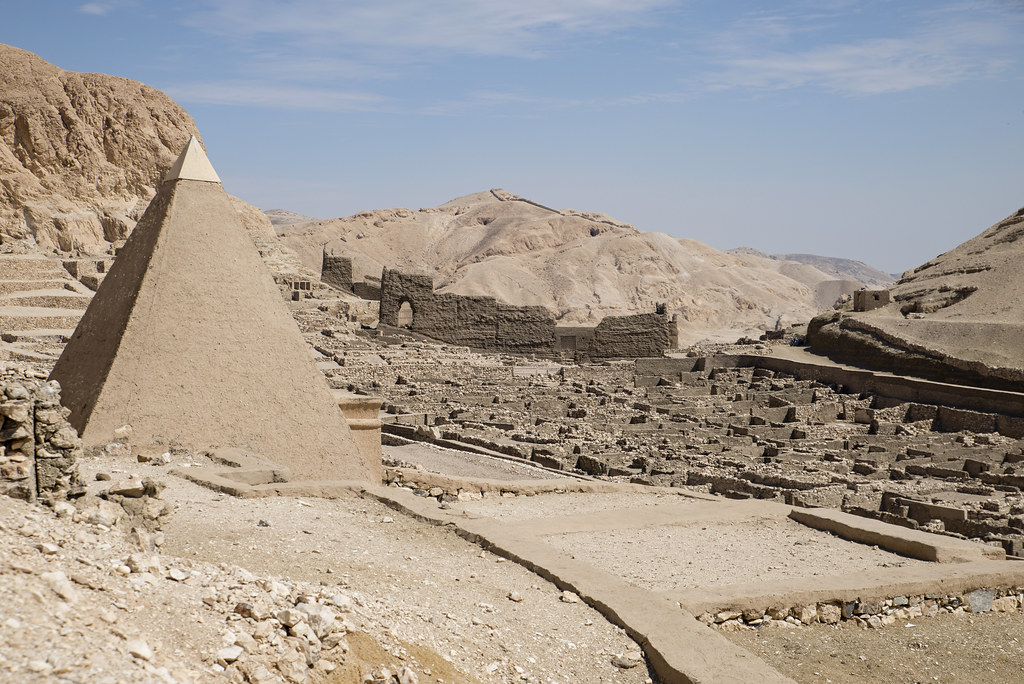
Dier el Madina was the Arabic name of the site, known as St maat “The Place of Truth”.Home for the artists who worked in the tombs from the 18th till the 20th dynasty.
Located on the west bank of the valley of the queens. This site contained the houses and tombs built by the community for their own use include small rock-cut chapels and substructures adorned with small pyramids. And fantastic descriptions and scenes given a life picture of their lives and beliefs and sculptured the statues and potteries.
There are many activities you can do in Luxor and they are:
Luxor Felucca Ride
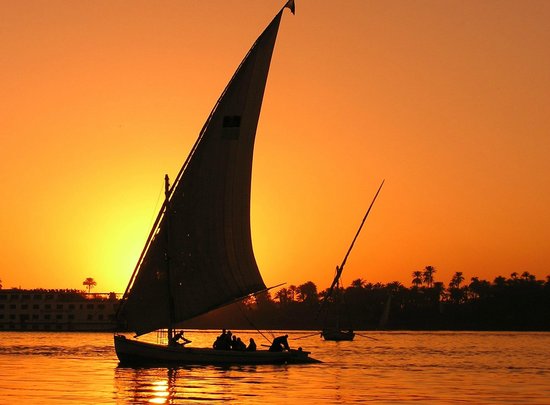
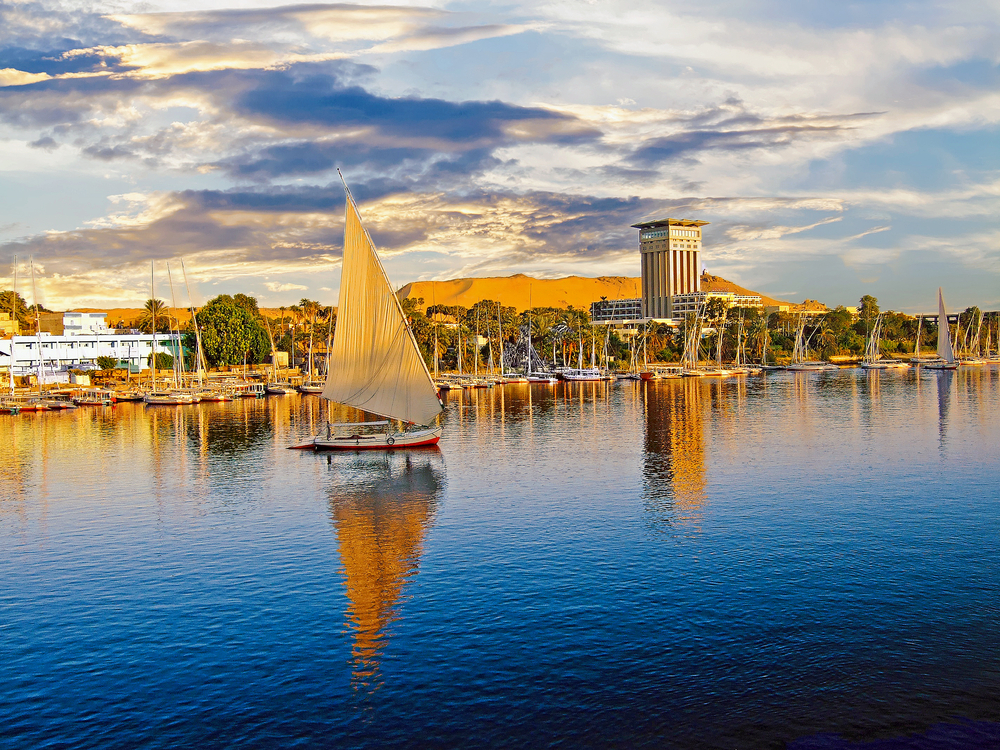
Feluccas are these traditional sailboats you’ll notice in huge numbers on the Nile. Sailing down the peaceful waters of the majestic Nile River, while watching the imposing Luxor Temple,
One of the most popular felucca rides in Luxor is the Banana Island excursion.
Take a short exploratory tour of the island, where you’ll be offered a refreshing cup of traditional Egyptian tea and some of the sweetest, most delicious bananas you’ve ever tasted.
Luxor Souq
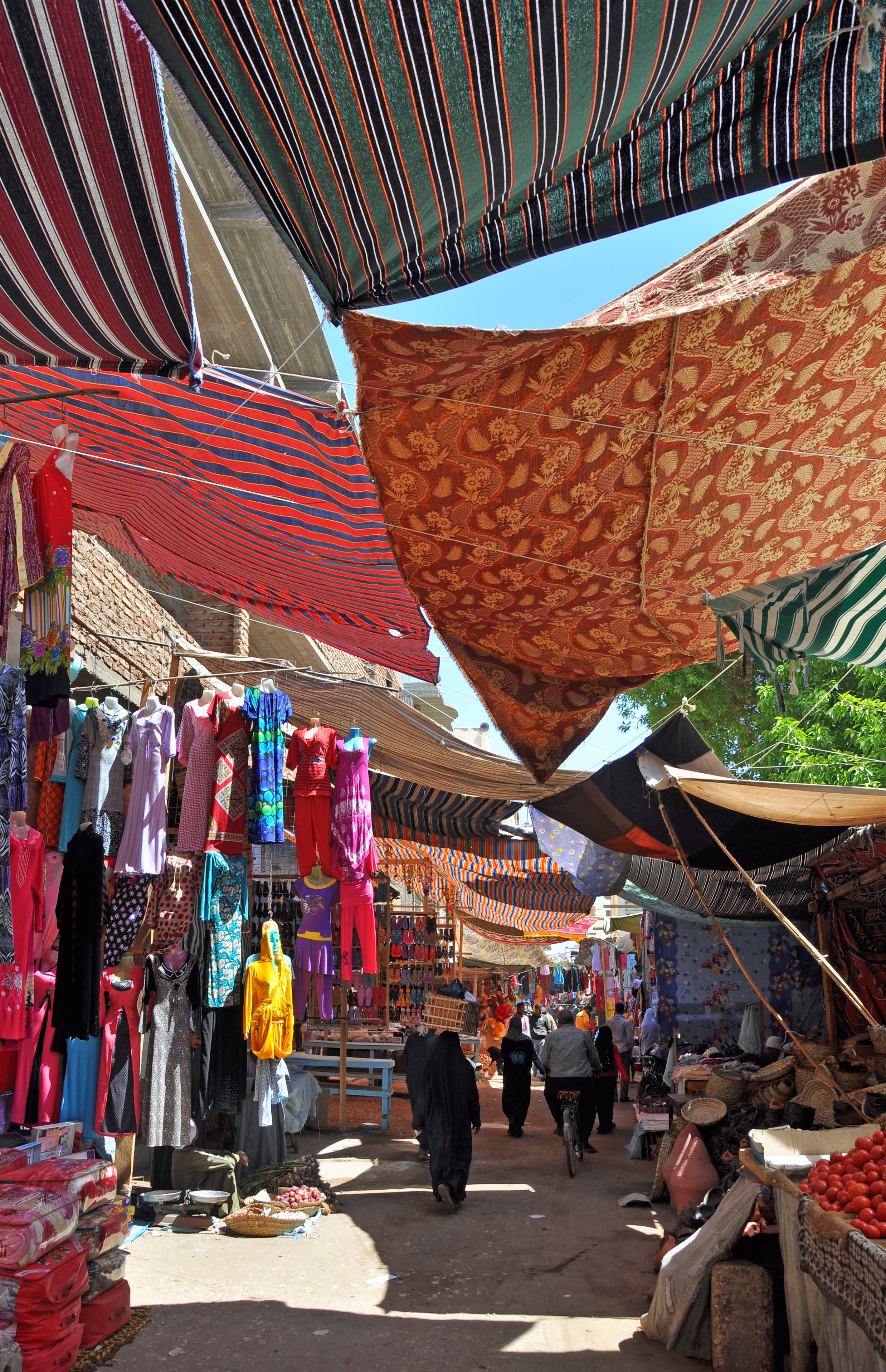
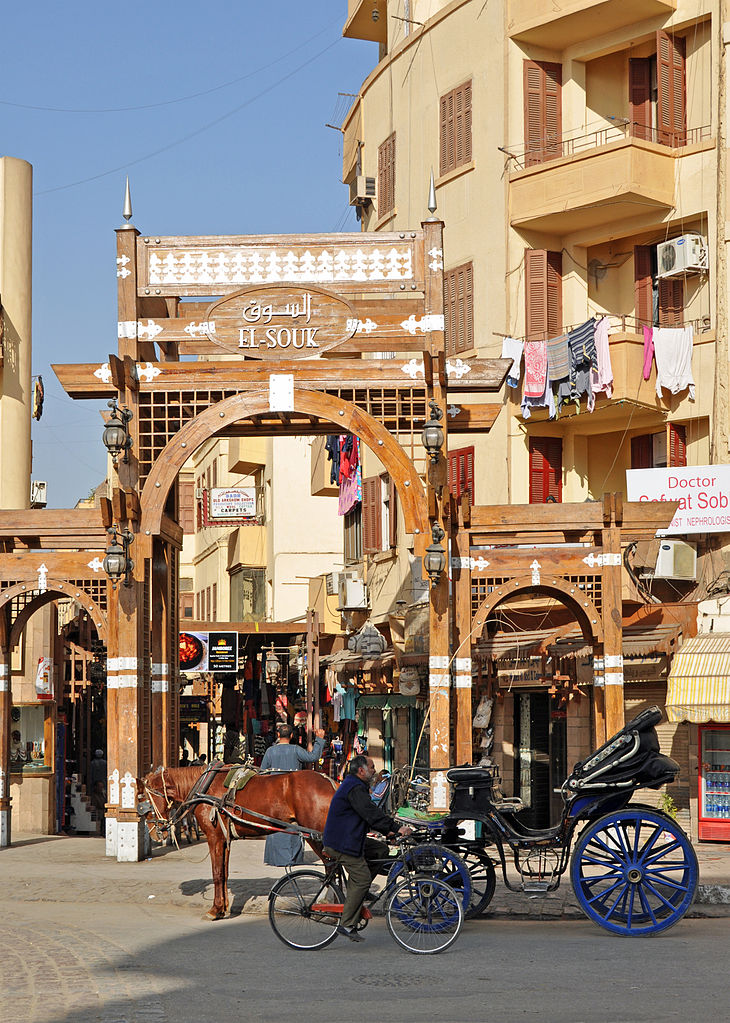
It’s a shopping local area similar to Khan El-Khalili. You will find souvenirs and bazaars and small statues, any kind of textile, leather, and herbs. And other items aimed at the tourist.
As you walk away from it along the street going to the vegetable and fruit market. That’s where you witness the local atmospheric.
At the end of the souq, you will see people standing with their hansom cab “الحنطور” . When you ride you would love this too much listening to songs and singing. See how they are kind and funny and see the great winter palace hotel.
In the end, we can see how Luxor beautiful and has so many monuments and archeological sites will impress you. Attractions and things to do to visit it and spend your leisure time there.


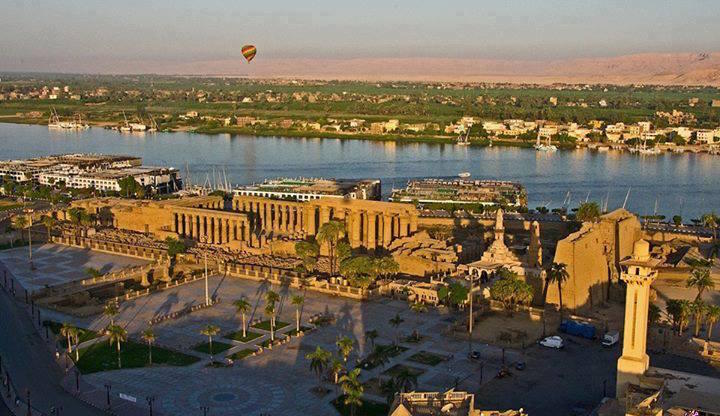


Customer
Guatemala has pledged a 40% increase in deportation flights carrying Guatemalans and migrants of other nationalities from the United States, President Bernardo Arevalo announced Wednesday during a press conference with US Secretary of State Marco Rubio.
[url=https://kra-35.ru]сайт кракен тор[/url]
Guatemala has also agreed to create a task force for border control and protection along the country’s eastern borders. The force, composed of members of the National Police and army, will be tasked with fighting “all forms of transnational crime,” Arevalo said.
[url=https://at-kra33.cc]kra46 at[/url]
Foreign nationals who arrive in Guatemala through deportation flights will be repatriated to their home countries, Arevalo said, adding that the US and Guatemala would continue to have talks on how the process would work and how the US would cooperate.
[url=https://kra-35-at.ru]kra36.cc[/url]
Arevalo also said that Rubio has voiced his support for developing infrastructure projects in the Central American nation. He added that his government would send a delegation to Washington in the coming weeks to negotiate deals for economic investments in Guatemala – which he said would incentivize Guatemalans to stay in their home country and not migrate to the US.
Arevalo said Guatemala has not had any discussions about receiving criminals from the US as El Salvador’s president has offered. He also insisted his country has not reached a “safe third country” agreement with the United States, which would require migrants who pass through Guatemala to apply for asylum there rather than continuing to the US.
kra33.at
https://kra35-cc.com
Customer
1Win Kenya is a premier online betting platform offering a seamless gambling experience for sports and casino enthusiasts., offering a seamless experience for sports betting and casino gaming. As a trusted name in Kenya, 1Win Kenya provides users with a secure platform, a vast selection of games, and flexible betting options on sports like cricket, soccer, tennis, and basketball. Registering on 1Win is simple—just visit the official website, click on “Sign Up,” and choose to register via email or social media. Once you create an account, fund it with a deposit to start betting instantly. The 1Win casino section offers a premium gaming experience with various slots, table games, and live dealer options. To enhance the excitement, new and existing players can unlock generous rewards with the 1win bonus codes, gaining a significant advantage in their gameplay. The 1Win Bet app allows seamless sports predictions and betting on the go, ensuring uninterrupted access to all features. With a rapidly growing audience and a commitment to quality service, 1Win Kenya continues to set the standard for online gambling. Sign up today, claim your bonuses, and enjoy a thrilling betting experience with 1Win!
Customer
фильмы без рекламы без регистрации смотреть смотреть фильмы без смс и регистрации онлайн
Customer
Маркетплейс нового поколения https://x-nova.live уникальный сервис для удобных покупок и продаж. Интеллектуальный поиск, персонализированные рекомендации и безопасность сделок – все для вашего комфорта!
Customer
игровые автоматы за регистрацию бездепозитный бонус за регистрацию
Customer
Новый уникальный маркетплейс NOVA, есть все! Москва, Питер, всегда свежие клады!Акция для новых магазинов – продай на 1 млн, получи 100к!Приглашаем к сотрудничеству рекламодателей!
Customer
toto138
Customer
Красивые поздравления https://photofile.ru/otkrytki-so-svechami-vechnaya-i-svetlaya-pamyat-110-kartinok в одном месте! Огромный выбор картинок и открыток для любого повода. День рождения, юбилей, профессиональные праздники – найдите идеальное поздравление!
Customer
Форум для кулинаров https://food-recipe.ru и рестораторов! Лучшие рецепты, тренды гастрономии, обсуждения ресторанного бизнеса. Общайтесь, делитесь опытом и вдохновляйтесь новыми идеями. Присоединяйтесь к нашему кулинарному сообществу!
Customer
Hello new [url=https://indexssylka.blogspot.com/2025/01/kraken-mega-omg-omg.html]kraken z73
[/url]
Customer
Aparatos de calibración: esencial para el desempeño suave y óptimo de las máquinas.
En el entorno de la tecnología actual, donde la eficiencia y la seguridad del equipo son de suma trascendencia, los dispositivos de equilibrado tienen un tarea esencial. Estos equipos específicos están creados para equilibrar y estabilizar elementos giratorias, ya sea en dispositivos manufacturera, automóviles de transporte o incluso en dispositivos de uso diario.
Para los profesionales en conservación de equipos y los técnicos, trabajar con aparatos de equilibrado es importante para asegurar el funcionamiento estable y fiable de cualquier mecanismo móvil. Gracias a estas opciones tecnológicas innovadoras, es posible minimizar significativamente las oscilaciones, el estruendo y la esfuerzo sobre los soportes, extendiendo la vida útil de partes valiosos.
Asimismo importante es el función que juegan los sistemas de balanceo en la servicio al cliente. El soporte profesional y el mantenimiento regular utilizando estos dispositivos facilitan dar servicios de alta estándar, elevando la contento de los clientes.
Para los titulares de negocios, la inversión en unidades de equilibrado y medidores puede ser fundamental para aumentar la rendimiento y eficiencia de sus equipos. Esto es principalmente relevante para los dueños de negocios que manejan reducidas y medianas negocios, donde cada detalle es relevante.
También, los sistemas de equilibrado tienen una gran utilización en el área de la prevención y el supervisión de excelencia. Permiten identificar eventuales errores, previniendo mantenimientos elevadas y problemas a los equipos. Además, los indicadores extraídos de estos equipos pueden emplearse para mejorar métodos y potenciar la presencia en sistemas de búsqueda.
Las zonas de utilización de los dispositivos de equilibrado abarcan variadas industrias, desde la elaboración de vehículos de dos ruedas hasta el supervisión ecológico. No interesa si se habla de extensas manufacturas manufactureras o modestos espacios de uso personal, los sistemas de balanceo son fundamentales para promover un funcionamiento productivo y sin presencia de paradas.
Customer
Equipos de balanceo: importante para el operación fluido y efectivo de las maquinarias.
En el entorno de la avances avanzada, donde la eficiencia y la fiabilidad del sistema son de gran trascendencia, los dispositivos de ajuste desempeñan un rol vital. Estos equipos especializados están creados para balancear y regular partes dinámicas, ya sea en maquinaria manufacturera, medios de transporte de desplazamiento o incluso en dispositivos hogareños.
Para los técnicos en conservación de sistemas y los especialistas, trabajar con aparatos de ajuste es crucial para proteger el funcionamiento suave y fiable de cualquier dispositivo dinámico. Gracias a estas alternativas innovadoras modernas, es posible minimizar considerablemente las sacudidas, el ruido y la presión sobre los soportes, prolongando la longevidad de partes costosos.
Igualmente trascendental es el tarea que juegan los sistemas de calibración en la atención al usuario. El asistencia experto y el conservación permanente usando estos sistemas posibilitan dar soluciones de alta excelencia, elevando la bienestar de los clientes.
Para los dueños de negocios, la contribución en sistemas de equilibrado y sensores puede ser esencial para incrementar la productividad y rendimiento de sus equipos. Esto es principalmente trascendental para los empresarios que administran pequeñas y intermedias negocios, donde cada detalle cuenta.
Por otro lado, los aparatos de equilibrado tienen una vasta aplicación en el sector de la fiabilidad y el monitoreo de calidad. Permiten localizar potenciales fallos, evitando intervenciones elevadas y perjuicios a los dispositivos. Más aún, los indicadores extraídos de estos sistemas pueden usarse para mejorar procedimientos y mejorar la visibilidad en buscadores de exploración.
Las áreas de aplicación de los dispositivos de ajuste cubren múltiples sectores, desde la fabricación de ciclos hasta el supervisión ecológico. No influye si se trata de importantes manufacturas manufactureras o modestos locales hogareños, los sistemas de equilibrado son fundamentales para proteger un funcionamiento eficiente y sin riesgo de fallos.
Customer
Slot777
Berikut artikel yang Anda minta berdasarkan konteks sebelumnya:
Misteri Tulisan Yesus di Pasir: Rahasia Tersembunyi dalam Kitab Suci
Dalam tradisi Kristen, salah satu momen paling misterius adalah ketika Yesus menulis di pasir saat menghadapi seorang perempuan yang tertangkap berzina. Apa sebenarnya yang ditulisnya?
Jejak Ilahi dalam Tulisan
Merujuk pada Kitab Keluaran, Allah sendiri pernah menulis dengan jari-Nya di atas batu. Yesus, sebagai inkarnasi Ilahi, tampaknya mengulang tindakan sakral ini.
Hipotesis Tulisan Rahasia
Beberapa sarjana menafsirkan bahwa Yesus mungkin menulis:
– Nama-nama para penuduh
– Daftar dosa mereka
– Ayat-ayat hukum yang mereka langgar
Makna Tersembunyi
Tindakan menulis di pasir bukan sekadar gerakan acak, tetapi memiliki signifikansi teologis mendalam. Yesus secara simbolis mengungkapkan kebenaran tersembunyi tentang kemanusiaan.
Kesimpulan
Meskipun isi tulisan tetap menjadi misteri, tindakan Yesus menunjukkan kebijaksanaan yang melampaui pemahaman manusia.
Customer
SEO BACKLINKS, CROSS-LINKS, HACKED WP-ADMIN – TELEGRAM @SEO_ANOMALY
Customer
demo pg slot
Persentase Pengembalian Playtech Slot Hot dan juga Kepentingan Memainkan Slot Percobaan PG Mesin
Hiburan game online semakin terkenal, dan juga Pragmatic Perusahaan (Pragmatic Slot) merupakan salah provider terkemuka berkat visual menawan, fasilitas kreatif, dan Return to Player (RTP) dengan tinggi. Tetapi, sebelum memainkan memakai uang asli, perlu supaya mencoba permainan versi uji Pragmatic Mesin. Mengapa? Berikut rinciannya.
Apa Itu Game Demo Pragmatic Game?
Permainan percobaan merupakan tipe uji dalam aktivitas mesin yang menggunakan kredit digital, bukan modal asli. Hal ini memfasilitasi player agar mengenal sistem game, fasilitas bonus, dan juga Return to Player tanpa adanya potensi kerugian moneter.
Mengapa Mencoba Slot Percobaan Pragmatic Mesin Penting?
Mengerti Sistem Permainan
Setiap slot memiliki kebijakan dan juga fungsi bervariasi. Permainan demo memfasilitasi Anda mempelajarinya dengan tidak stres.
Mengevaluasi Level RTP
Persentase Pengembalian ialah persentase kemenangan teoritis di rentang panjang. Dengan demo, kamu bisa mengamati seberapa kerap permainan menyediakan keuntungan.
Menyusun Rencana
Mesin versi uji memfasilitasi pemain supaya mengetes taktik contohnya pengaturan betting tanpa bahaya hilangnya uang.
Mencari Mesin Favorit
PG Soft menyediakan berbagai konsep permainan. Melalui menjalankan demo, Anda mampu mencari permainan dengan sesuai dengan keinginan kamu.
Mengurangi Rugi Besar
Bermain versi uji membantu Anda memahami permainan sebelumnya bertaruh dengan uang nyata, meminimalkan bahaya rugi.
Manfaat Bermain Permainan Percobaan Playtech Game
Tanpa Risiko Keuangan: Bermain dengan saldo digital, tanpa adanya beban rugi dana.
Memperkuat Rasa Percaya Anda: Melatih melalui demo membuat kamu semakin terbiasa pada saat bergeser ke aktivitas menggunakan uang sunguhan.
Mengenal Fitur Insentif: Pelajari metode memicu fungsi insentif contohnya Putaran Gratis dan Simbol Wild.
Menghemat Durasi dan Dana: Uji berbagai slot dengan tidak harus menghabiskan dana.
Saran Memainkan Permainan Versi Uji Playtech Game
Fokus pada fasilitas insentif serta teknik kerjanya.
Lihatlah risiko permainan (besar atau rendah).
Atur limit jam serta biaya walaupun memainkan memakai kredit simulasi.
Jelajahi beberapa konsep untuk mengetahui favorit pemain.
Customer
Хотите купить футболку в качестве сувенира с рисунком в русском
[url=https://imatreshki.ru/magazin/folder/matreshki]русские сувениры[/url]
Customer
thc joint shop in prague cali weed for sale in prague
Customer
Aparatos de balanceo: fundamental para el rendimiento suave y eficiente de las dispositivos.
En el ámbito de la ciencia moderna, donde la productividad y la confiabilidad del dispositivo son de suma trascendencia, los dispositivos de ajuste juegan un función vital. Estos sistemas adaptados están creados para calibrar y regular elementos rotativas, ya sea en dispositivos de fábrica, transportes de movilidad o incluso en aparatos caseros.
Para los expertos en reparación de sistemas y los ingenieros, operar con aparatos de ajuste es esencial para proteger el rendimiento suave y fiable de cualquier sistema rotativo. Gracias a estas alternativas modernas sofisticadas, es posible limitar notablemente las vibraciones, el ruido y la esfuerzo sobre los rodamientos, extendiendo la duración de piezas importantes.
De igual manera importante es el función que tienen los dispositivos de balanceo en la servicio al consumidor. El ayuda experto y el reparación constante aplicando estos aparatos facilitan dar soluciones de óptima nivel, mejorando la contento de los clientes.
Para los propietarios de emprendimientos, la aporte en sistemas de equilibrado y dispositivos puede ser esencial para aumentar la eficiencia y desempeño de sus aparatos. Esto es particularmente trascendental para los dueños de negocios que gestionan pequeñas y medianas emprendimientos, donde cada detalle cuenta.
También, los dispositivos de ajuste tienen una amplia aplicación en el área de la seguridad y el control de excelencia. Permiten localizar potenciales errores, previniendo arreglos caras y perjuicios a los aparatos. También, los indicadores obtenidos de estos sistemas pueden emplearse para mejorar métodos y potenciar la visibilidad en motores de investigación.
Las zonas de implementación de los aparatos de calibración abarcan diversas ramas, desde la producción de transporte personal hasta el supervisión del medio ambiente. No importa si se considera de enormes manufacturas de fábrica o modestos locales de uso personal, los sistemas de equilibrado son fundamentales para promover un funcionamiento óptimo y libre de detenciones.
Customer
Return to Player PG Game Hot dan Kepentingan Menjalankan Mesin Demo Pragmatic Permainan
Permainan slot daring lebih terkenal, dan Playtech Soft (Pragmatic Slot) menjadi satu provider terbaik berkat visual menawan, fitur kreatif, dan juga Return to Player (RTP) dengan kompetitif. Namun, sebelum Anda memainkan memakai uang sunguhan, esensial untuk mencoba mesin percobaan Pragmatic Mesin. Kenapa? Berikut penjelasannya.
Apakah Itu Permainan Versi Uji Pragmatic Slot?
Mesin percobaan adalah tipe percobaan dalam game mesin yang menggunakan poin simulasi, tidak dana nyata. Ini memungkinkan player agar mengetahui cara kerja aktivitas, fasilitas bonus, dan juga RTP tanpa adanya potensi kerugian finansial.
Kenapa Memainkan Game Versi Uji Playtech Slot Esensial?
Mengetahui Cara Kerja Permainan
Setiap permainan memiliki peraturan dan juga fitur bervariasi. Slot versi uji memudahkan Anda mengetahuinya tanpa tekanan.
Mengetes Tingkat Persentase Pengembalian
Persentase Pengembalian ialah persentase kemenangan teoritis pada jangka jauh. Melalui percobaan, kamu mampu menyaksikan sejauh mana sering game menyediakan hasil.
Mengembangkan Strategi
Slot percobaan memungkinkan kamu untuk menguji rencana seperti pengaturan pertaruhan tanpa adanya bahaya kehilangan uang.
Mengetahui Game Kesukaan
PG Provider memiliki berbagai gaya permainan. Melalui mencoba demo, Anda mampu mencari game dengan tepat untuk keinginan Anda.
Menghindari Rugi Signifikan
Mencoba percobaan memudahkan pemain mengetahui game sebelum berjudi menggunakan modal nyata, menurunkan risiko kehilangan.
Manfaat Mencoba Slot Percobaan Playtech Permainan
Dengan tidak Potensi Kerugian Moneter: Memainkan dengan saldo digital, tanpa beban hilangnya uang.
Meningkatkan Keyakinan Sendiri: Melatih melalui demo menjadikan Anda lebih siap ketika pindah menuju game memakai uang nyata.
Mengenal Fitur Insentif: Pelajari teknik menyebabkan fasilitas insentif misalnya Free Spins atau juga Simbol Wild.
Menyimpan Jam dan Dana: Uji berbagai permainan tanpa adanya harus membuang uang.
Saran Bermain Slot Versi Uji PG Permainan
Konsentrasi pada fitur hadiah serta metode operasinya.
Perhatikan volatilitas mesin (tinggi atau kecil).
Atur limit durasi dan biaya walaupun bermain dengan poin digital.
Jelajahi beberapa konsep supaya mencari pilihan pemain.
Customer
CCTV Focus provides in-depth analysis of video surveillance technologies, covering IP camera systems and software solutions. It features detailed reviews of video management software (VMS), highlighting features such as object detection using artificial intelligence. The site offers ratings of surveillance system manufacturers and their products. A curated list of the top 10 video surveillance software options is available. The resource also includes analysis of various surveillance technologies, with attention to specialized AI functionalities within CCTV. The content is designed for both professional installers and business owners, providing information to assist in making informed decisions about security systems. The site’s guides cover camera selection, current challenges in video surveillance and advanced security protocols.
[url=https://www.cctv-focus.com/]motion detection software[/url]
Customer
kantor bola
KANTORBOLA adalah pilihan terbaik bagi pecinta slot online. Nikmati berbagai permainan slot menarik, bonus besar, dan pengalaman bermain yang aman dan terpercaya.
Customer
토토사이트
토토사이트 커뮤니티: 안전한 베팅을 위한 길잡이
토토사이트 커뮤니티는 스포츠 베팅을 즐기는 사람들에게 단순한 정보 공유의 장을 넘어, 안전한 배팅 환경을 조성하는 데 중요한 역할을 합니다. 이곳에서는 초보자부터 전문가까지 다양한 사람들이 모여 베팅 전략을 논의하고, 신뢰할 수 있는 토토사이트를 추천하며, 먹튀 사고를 예방하기 위한 정보를 공유합니다. 특히, 사설 토토사이트의 위험성을 알리고, 이를 피할 수 있는 방법을 제시함으로써 사용자들이 더 안전하게 베팅을 즐길 수 있도록 돕습니다.
사설 토토사이트의 숨겨진 위험
사설 토토사이트는 정부의 규제를 받지 않기 때문에 다양한 문제를 일으킬 수 있습니다. 예를 들어, 공정하지 않은 배당률, 과장된 광고, 개인정보 유출 등이 대표적인 문제점입니다. 또한, 사설 토토사이트는 법적 문제로 인해 갑자기 사라지는 경우가 많아 사용자들이 금전적 손실을 입을 위험이 큽니다. 이런 이유로, 토토 커뮤니티에서는 사설 토토사이트보다는 규제를 받는 공식 사이트를 이용할 것을 권장합니다.
토토 커뮤니티가 제공하는 가치
토토 커뮤니티는 단순히 정보를 나누는 공간이 아니라, 사용자들이 안전하게 베팅할 수 있도록 돕는 네트워크입니다. 예를 들어, 새로운 토토사이트가 등장했을 때 커뮤니티 멤버들은 해당 사이트의 운영 주체, 결제 시스템, 사용자 리뷰 등을 꼼꼼히 검토합니다. 이를 통해 먹튀 사고를 미리 방지하고, 신뢰할 수 있는 사이트만을 추천합니다. 또한, 문제가 발생했을 때는 보증 사이트를 통해 사용자들이 손실을 최소화할 수 있도록 돕습니다.
어떻게 신뢰할 수 있는 토토사이트를 찾을까?
토토 커뮤니티에서는 신뢰할 수 있는 토토사이트를 찾기 위해 몇 가지 중요한 기준을 제시합니다. 먼저, 사이트의 운영 주체가 명확한지 확인하는 것이 중요합니다. 정부나 공인된 기관에서 관리하는 사이트라면 신뢰할 수 있습니다. 또한, 다른 사용자들의 리뷰를 참고하여 사이트의 신뢰성을 판단할 수 있습니다. 긍정적인 평가가 많고, 문제가 거의 없는 사이트라면 안전하게 이용할 수 있습니다.
결제 시스템도 중요한 확인 요소 중 하나입니다. 신용카드, 전자지갑 등 다양한 결제 방법을 지원하고, SSL 암호화를 통해 금융 정보를 보호하는 사이트라면 더욱 신뢰할 수 있습니다. 마지막으로, 온라인 커뮤니티나 포럼에서 해당 사이트에 대한 평판을 확인하는 것도 좋은 방법입니다. 다른 사용자들이 어떻게 평가하는지, 문제가 없는지 꼼꼼히 살펴보는 것이 중요합니다.
토토 커뮤니티의 보증 사이트
토토 커뮤니티에서는 먹튀 사고를 예방하기 위해 보증 사이트를 추천합니다. 이러한 사이트는 사용자들의 개인정보와 금융 정보를 보호하며, 문제가 발생했을 때 빠르게 해결할 수 있는 시스템을 갖추고 있습니다. 보증 사이트를 이용하면 안전하게 베팅을 즐길 수 있으며, 만약 문제가 생기더라도 커뮤니티의 도움을 받아 해결할 수 있습니다.
마무리
토토사이트 커뮤니티는 스포츠 베팅을 즐기는 사람들에게 안전하고 신뢰할 수 있는 정보를 제공하는 중요한 공간입니다. 사설 토토사이트의 위험성을 인지하고, 신뢰할 수 있는 사이트를 선택하는 것이 무엇보다 중요합니다. 토토 커뮤니티의 정보를 참고하여 안전한 베팅 환경을 조성하고, 스포츠 베팅을 더욱 즐겁게 즐기시길 바랍니다. 항상 책임감 있게 베팅에 임하는 것도 잊지 마세요!
Customer
RPG Minecraft
Experience the World of Minecraft: Your Ultimate Existence and Anarchy Exploration
Welcome to your Gateway to the Extremely Engaging and Engaging Minecraft Multiplayer Experience. Whether you’re a Designer, Combatant, Adventurer, or Planner, our Server Delivers Boundless Options to Take Part In Persistence and Freedom Environments in Ways you’ve Never seen Before.
Why Choose Experiences in Minecraft?
Our Network is Developed to Deliver the Ultimate Minecraft Experience, Combining Unique Worlds, Captivating Gameplay, and a Supportive Society. Explore, Conquer, and Construct your own Explorations with Unique Components Tailored for All type of Participant.
Key Attributes
– Persistence and Chaos Settings: Encounter the Adrenaline of Persisting against the odds or Dive into Wild PvP Engagements with no rules and full freedom.
– Massive Server Capacity: With Slots for up to 3,750 Gamers, the Fun never stops.
– 24/7 Realm Status: Connect At All Times to Enjoy Lag-Free, Stable Mechanics.
– Tailored Resources: Traverse our Precisely Designed Minecraft Maps Stocked with Addons, Plugins, and Unique Products from our Store-Based Inventory.
Special Mechanics Modes
Endurance Feature
In Endurance Mode, you’ll Explore Endless Landscapes, Collect Materials, and Design to your heart’s content. Combat off Enemies, Work with Partners, or Take on Individual Challenges where only the Resilient Overcome.
Freedom Option
For Users Seeking Disorder and Thrill, Chaos Option Offers a Realm with No Boundaries. Engage in Fierce PvP Fights, Form Partnerships, or Dominate Others to Conquer the Zone. Here, Survival of the Most Skilled is the Ultimate Law.
Unique Minecraft Elements
– Journey Zones: Explore Exciting Minecraft Maps and Thrilling Quests.
– Economy and Trading: Our Community-Driven Commerce Allows you to Sell, Buy, and Offer Goods to Climb the Ranks and Build Your Identity as a Powerful Gamer.
– Minecraft Inventory: Access Special Tools, Enhancements, and Tiers that Enhance your Interaction.
Minecraft Store: Boost Your Gameplay
Our In-Game Shop Offers a Selection of Enhancements, Levels, and Products to Match every Preference. From Budget-Friendly Gift Cases to Exclusive Upgrades, you can Access Exciting Options and Elevate your Experience to the Higher Level.
Popular Products
– Donate Bundles (x10) – €1.00
– VIP – €1.40
– Elysium Rank – €20.00
– OWNER Tier – €40.00
– BOSS Rank – €60.00
Top Levels for Premier Users
– CREATOR (€10.00) – Unlock Creative Features to Showcase your Imagination.
– Vanguard (€12.00) – Exclusive Benefits and Tailored Privileges.
– Paragon (€59.10) – Top Features for the Ultimate Competitor.
– Luminescent (€50.00) – Shine as a Top-Tier Hero on the Platform.
Join Our Supportive Minecraft Group
We Strive in Developing a Welcoming, Dynamic, and Friendly Society. Whether you’re Completing RPG Adventures, Exploring Specialized Zones, or Participating in Player-Driven PvP, there’s Always something Exciting to Experience.
What You Can Look Forward To
– Friendly Group: Engage With Fellow Minecraft Players from Different Countries.
– Exciting Activities: Take Part in Unique Challenges, Events, and Server-Wide Activities.
– Dedicated Assistance: Our Team Ensures Reliable Play and Supports you with any Problems.
Customer
great articleSEO BACKLINKS, CROSS-LINKS, HACKED WP-ADMIN – TELEGRAM @SEO_ANOMALY bokep
Customer
Plunge into the World of GTA 5 RP: Engage with Our Exclusive Roleplay Server
Welcome to the captivating realm of GTA 5 RP, where all gamer can develop their unique story in a energetic gaming atmosphere. Our roleplay server is suitable for those desiring an engaging and deep experience. Join a vibrant community of GTA RP enthusiasts and step into this stimulating world!
How to Commence Playing?
1. Buy and install a authorized edition of GTA 5.
2. Install the launcher.
3. Link to the server and enroll through the application or our website to commence your journey!
Our Environment: An Open World Adventure
Our server offers a special open-world environment with custom mods that enable you to build your criminal empire, set out on adventurous missions, and mold your avatar’s narrative. Whether you become part of neighborhood gangs or transform into a top cop, the possibilities are boundless!
Acquire Money and Increase Your Fortune
Are you ready to conquer the thoroughfares of Los Santos and acquire considerable money? We supply the tools and tactics to help you gather a wealth in the world of GTA RP.
Customer
situs bokep, kontol kuda nonton
Customer
Your Top Goal for High-Quality In-Game Products!
In today’s quick gaming landscape, the thrill of investigation and development is important. If you’re searching for special objects, restricted armament designs, tailored settings, keys, resources, tasks, or user-friendly refill solutions, look no further! Introducing to Items4Games, your one-stop store for a extensive collection of premium in-game products designed to improve your gaming adventure.
Why Items4Games Is Unique
Varied Selection of In-Game Assets
We present a large assortment of in-game items, from unique designs to one-of-a-kind items and game tokens. Our collection is customized to boost your gameplay and engage you in a world of endless possibilities.
Assistance for Famous Series
Our extensive offering showcases popular games like CS2, Fortnite, Valorant, Dota 2, and Call of Duty. No matter your gaming preference, we have items that meet to the biggest games in the sector.
Enhanced Gaming Journey
With exclusive in-game goods, you can unlock new potential and exhibit your unique look. From exclusive weapon designs to powerful artifacts, our offerings elevate your gaming sessions into outstanding experiences.
Secure and Reliable Transactions
We focus on your protection with reliable and honest deals. You can buy with assurance, knowing that your data is guarded at all moments.
Competitive Fees
Get premium items without destroying the bank. Our cost-effective and fair fee model ensures that enhancing your gaming journey is within reach to all.
Simple Platform
Our easy-to-use design lets you to quickly look through and secure the goods you require, preserving you energy and boosting your buying process.
What Is Waiting for You at Items4Games
Explore weapon looks that show your personality, unique artifacts for noteworthy achievements, and game access that grant new content. Our materials and quests aid you level up effortlessly, while refill options maintain your game funds ready for play. Enjoy additional game types that introduce variety and substance to your gaming experiences.
In summary, Items4Games is your ultimate source for elevating your gaming adventure with exclusive in-game assets. Discover our collection today and boost your gameplay to new limits!
Customer
situs bokep, BLACK SEO LINKS, BACKLINKS, SOFTWARE FOR MASS BACKLINKING – TELEGRAM @SEO_LINK nonton
Customer
great articletai om anjing lu bangsad bokep
Customer
The All-in-One Store for Artificial Intelligence-Driven Creativity
In this fast-paced society, integrating innovation with technology is essential for progress and efficiency. At Our Platform, we provide high-quality, custom-crafted prompts intended to boost your artistic undertakings across various categories.
Reasons to Choose Template Forge?
We are committed to offering only the top prompts to assist your innovative projects. Our crew of professionals thoroughly organizes each prompt to confirm utility and pertinence, facilitating it more manageable for you to discover ideas when you require it most.
Diverse Categories
Our comprehensive inventory encompasses diverse types, such as online marketing, problem-solving, and narrative crafting. This range guarantees you have the resources needed to handle any initiative efficiently.
Elevate Your Creativity
Template Forge’s inspirations serve as a springboard for your concepts, allowing you to center on your personal style and aspirations beyond the pressure of creativity. Each prompt is intended to inspire and lead you through the artistic process.
Join thousands of content creators who have leveraged the power of AI at Template Forge. Discover our wide fields today and access your imaginative capabilities. With our top-notch prompts, crafting with intention has always been more straightforward. Welcome to your all-in-one shop for AI-powered innovation!
Customer
Discover CS2 Textures: Find Your Flawless Match
Change Your Gameplay
Highlight your individuality in Counter-Strike 2 (CS2) with special weapon skins. Our store provides a diverse selection, from uncommon to limited-edition designs, permitting you to express your aesthetic and improve your gameplay.
Easy and Secure Acquisition
Appreciate a seamless shopping journey with rapid digital shipment, ensuring your newly purchased skins are immediately available. Shop confidently with our secure checkout process, whether you’re searching for affordable options or premium designs.
How It Works
1. Browse the Range: Explore a vast array of CS2 skins, arranged by rarity, gun type, or fashion.
2. Select Your Skin: Include your desired skin to your basket and continue to finalization.
3. Dress Your New Skins: Promptly receive and equip your skins in-game to shine during games.
Budget-friendly Tailoring
Personalization should be available for everyone. We regularly offer deals on CS2 skins, making top-tier designs available at affordable prices.
Featured Skins
– P250 | Nuclear Threat (Factory New) – 3150 €
– Desert Eagle | Hand Cannon (Minimal Wear) – 450 €
– StatTrak™ P2000 | Ocean Foam (Factory New) – 285.88 €
– Glock-18 | Synth Leaf (Field-Tested) – 305 €
Embark on Your Shopping Experience Now!
Upgrade your gameplay with our impressive range of CS2 skins. Whether upgrading your arms or building a one-of-a-kind collection, our marketplace is your source for premium skins. Change your gaming journey today!
Customer
Velocidad critica
Sistemas de balanceo: fundamental para el operación suave y productivo de las maquinarias.
En el mundo de la innovación actual, donde la rendimiento y la seguridad del dispositivo son de máxima significancia, los aparatos de ajuste desempeñan un función fundamental. Estos equipos específicos están desarrollados para calibrar y estabilizar piezas móviles, ya sea en herramientas productiva, transportes de traslado o incluso en dispositivos caseros.
Para los especialistas en mantenimiento de equipos y los profesionales, operar con equipos de balanceo es esencial para proteger el rendimiento suave y estable de cualquier aparato dinámico. Gracias a estas opciones avanzadas modernas, es posible reducir notablemente las movimientos, el estruendo y la esfuerzo sobre los rodamientos, extendiendo la duración de piezas importantes.
Igualmente significativo es el rol que desempeñan los aparatos de calibración en la servicio al comprador. El asistencia experto y el mantenimiento permanente utilizando estos sistemas permiten proporcionar prestaciones de óptima nivel, mejorando la bienestar de los clientes.
Para los titulares de empresas, la contribución en sistemas de balanceo y detectores puede ser clave para incrementar la productividad y productividad de sus dispositivos. Esto es principalmente trascendental para los dueños de negocios que administran medianas y intermedias negocios, donde cada punto es relevante.
Además, los sistemas de calibración tienen una vasta implementación en el área de la prevención y el monitoreo de calidad. Permiten detectar eventuales fallos, evitando mantenimientos elevadas y perjuicios a los dispositivos. También, los datos generados de estos aparatos pueden emplearse para maximizar procedimientos y potenciar la reconocimiento en buscadores de consulta.
Las sectores de uso de los aparatos de equilibrado abarcan numerosas áreas, desde la fabricación de transporte personal hasta el monitoreo ambiental. No afecta si se refiere de enormes fabricaciones manufactureras o limitados talleres hogareños, los dispositivos de equilibrado son necesarios para promover un funcionamiento productivo y sin fallos.
Customer
bata4d
Customer
ST666 hiện đang khẳng định vị thế là sân chơi giải trí trực tuyến quy mô lớn và cực kỳ uy tín. Tại trang chủ ST666, bạn sẽ khám phá hàng loạt game cá cược hấp dẫn như live casino, cược thể thao, bắn cá đổi thưởng, xổ số may mắn, v.v. với tỷ lệ cược ưu đãi. Đừng bỏ lỡ cơ hội trải nghiệm cá cược đỉnh cao ngay tại ST666 để tận hưởng cảm giác xanh chín và thắng lớn!
ST666 – Điểm Đến Giải Trí Trực Tuyến Hàng Đầu Cho Người Yêu Cá Cược
ST666 đang từng bước khẳng định vị thế của mình như một sân chơi giải trí trực tuyến quy mô lớn và cực kỳ uy tín trong cộng đồng người chơi cá cược. Với sự đa dạng trong các loại hình trò chơi cùng tỷ lệ cược hấp dẫn, ST666 mang đến cho người chơi những trải nghiệm đỉnh cao, đầy kịch tính và cơ hội thắng lớn.
Đa Dạng Trò Chơi, Đẳng Cấp Giải Trí
Tại trang chủ ST666, bạn sẽ được khám phá một thế giới giải trí đa sắc màu với hàng loạt trò chơi cá cược hấp dẫn. Từ những trò chơi live casino đầy kịch tính, nơi bạn có thể tương tác trực tiếp với các dealer chuyên nghiệp, đến các trận cược thể thao sôi động, ST666 đáp ứng mọi nhu cầu của người chơi.
Đặc biệt, những ai yêu thích sự may rủi và cảm giác hồi hộp chắc chắn không thể bỏ qua các trò chơi như bắn cá đổi thưởng hay xổ số may mắn. Với tỷ lệ cược ưu đãi cùng phần thưởng hấp dẫn, ST666 là điểm đến lý tưởng để bạn thử vận may và tận hưởng những giây phút giải trí đỉnh cao.
Uy Tín Và An Toàn Tuyệt Đối
Một trong những yếu tố giúp ST666 chiếm được lòng tin của đông đảo người chơi chính là sự uy tín và minh bạch trong mọi giao dịch. Hệ thống bảo mật tiên tiến cùng đội ngũ hỗ trợ chuyên nghiệp luôn sẵn sàng giải quyết mọi thắc mắc của người chơi, đảm bảo trải nghiệm cá cược của bạn luôn suôn sẻ và an toàn.
Cơ Hội Thắng Lớn, Trải Nghiệm Đỉnh Cao
ST666 không chỉ là nơi để giải trí mà còn là địa chỉ lý tưởng để bạn thử thách bản thân và tìm kiếm cơ hội đổi đời. Với tỷ lệ cược hấp dẫn cùng nhiều chương trình khuyến mãi đặc biệt, ST666 mang đến cho người chơi cơ hội thắng lớn và tận hưởng cảm giác “xanh chín” khó quên.
Kết Luận
Nếu bạn đang tìm kiếm một sân chơi giải trí trực tuyến đẳng cấp, uy tín và đầy hứa hẹn, ST666 chính là sự lựa chọn hoàn hảo. Đừng bỏ lỡ cơ hội trải nghiệm những giây phút cá cược đỉnh cao và thử vận may của mình ngay hôm nay tại ST666. Hãy tham gia và khám phá thế giới giải trí đầy màu sắc, nơi niềm vui và phần thưởng lớn luôn chờ đón bạn!
ST666 – Nơi Giải Trí Gặp Cơ Hội!
Customer
Play Minecraft online
Discover the Universe of Minecraft: Your Ultimate Endurance and Disorder Journey
Welcome to your Gateway to the Highly Captivating and Engaging Minecraft Connected Experience. Whether you’re a Builder, Fighter, Discoverer, or Strategist, our Realm Delivers Infinite Chances to Enjoy Survival and Disorder Modes in Experiences you’ve Rarely seen Until Now.
Why Pick Journeys in Minecraft?
Our Network is Created to Offer the Top Minecraft Journey, Integrating Tailored Zones, Exciting Interaction, and a Active Community. Navigate, Dominate, and Build your own Quests with Tailored Elements Created for Every type of User.
Main Components
– Persistence and Anarchy Settings: Encounter the Thrill of Persisting against the odds or Plunge into Chaotic PvP Fights with no rules and full freedom.
– Large Network Capacity: With Slots for up to 3,750 Gamers, the Fun never stops.
– 24/7 Realm Access: Access Anytime to Experience Seamless, Reliable Play.
– Tailored Content: Traverse our Precisely Crafted Minecraft Maps Stocked with Mods, Plugins, and Special Items from our Online Shop.
Exclusive Mechanics Features
Survival Feature
In Persistence Feature, you’ll Navigate Endless Worlds, Acquire Resources, and Build to your heart’s content. Fight off Opponents, Work with Friends, or Face on Solo Challenges where only the Strong Prevail.
Anarchy Scenario
For Users Searching For Anarchy and Thrill, Anarchy Mode Provides a Universe with No Rules. Immerse in Intense PvP Battles, Build Alliances, or Compete With Players to Dominate the Realm. Here, Survival of the Fittest is the True Truth.
Custom Minecraft Features
– Adventure Maps: Explore Unique Minecraft Dungeons and RPG-Style Challenges.
– Commerce and Exchanges: Our Community-Driven System Lets you to Sell, Purchase, and Exchange Assets to Rise the Levels and Create Your Identity as a Influential Player.
– Minecraft Marketplace: Reach Special Goods, Levels, and Ranks that Boost your Experience.
Minecraft Marketplace: Enhance Your Experience
Our In-Game Shop Delivers a Variety of Enhancements, Statuses, and Products to Match every Preference. From Affordable Support Bundles to Exclusive Statuses, you can Access Additional Possibilities and Bring your Journey to the Top.
Best-Selling Features
– Donate Packs (x10) – €1.00
– VIP – €1.40
– Elysium Rank – €20.00
– OWNER Level – €40.00
– BOSS Tier – €60.00
Top Levels for Premier Users
– CREATOR (€10.00) – Gain Design Tools to Express your Imagination.
– Vanguard (€12.00) – Top Options and Exclusive Advantages.
– Paragon (€59.10) – Exclusive Benefits for the Best Gamer.
– Luminescent (€50.00) – Shine as a Elite Hero on the Platform.
Join Our Supportive Minecraft Society
We Focus in Developing a Encouraging, Vibrant, and Welcoming Network. Whether you’re Completing RPG Adventures, Traversing Specialized Zones, or Taking Part in Interactive PvP, there’s Consistently something Fresh to Discover.
Elements You Can Anticipate
– Friendly Player Base: Connect With Passionate Minecraft Gamers from Around the World.
– Exciting Competitions: Join in Unique Activities, Tournaments, and Community-Wide Events.
– Dedicated Assistance: Our Team Provides Seamless Play and Guides you with any Questions.
Customer
Your Final Objective for Exclusive In-Game Assets!
In the current dynamic gaming world, the excitement of investigation and growth is important. If you’re looking for rare relics, exclusive tool looks, focused features, tokens, resources, quests, or easy funding assistance, look no further! Introducing to Items4Games, your complete destination for a vast variety of premium in-game items crafted to improve your gaming playtime.
Why Items4Games Is Different
Multiple Selection of In-Game Items
We offer a extensive range of in-game assets, from unique skins to distinctive artifacts and game tokens. Our collection is designed to improve your gameplay and submerge you in a environment of infinite possibilities.
Backing for Famous Names
Our broad collection contains hit games like CS2, Fortnite, Valorant, Dota 2, and Call of Duty. No matter your gaming taste, we have products that meet to the top hits in the field.
Enhanced Gaming Experience
With special in-game products, you can reveal new potential and display your distinct look. From custom weapon skins to powerful artifacts, our items convert your gaming plays into outstanding activities.
Trustworthy and Reliable Exchanges
We emphasize your well-being with safe and honest exchanges. You can buy with confidence, knowing that your information is guarded at all occasions.
Fair Fees
Obtain superior items without crushing the financial plan. Our affordable and fair fee system ensures that boosting your gaming playtime is available to all.
Intuitive Interface
Our accessible system lets you to easily explore and secure the products you require, saving you energy and improving your purchase adventure.
What Is Waiting for You at Items4Games
Explore weapon skins that mirror your personality, limited artifacts for special achievements, and game codes that open new content. Our tools and objectives aid you raise up effortlessly, while refill services ensure your game budget ready for play. Enjoy extra game modes that bring change and complexity to your gaming experiences.
In closing remarks, Items4Games is your final source for boosting your gaming experience with high-quality in-game assets. Discover our collection today and elevate your gameplay to new limits!
Customer
The All-in-One Store for Artificial Intelligence-Powered Creativity
In today’s accelerated landscape, combining imagination with modern advancements is essential for innovation and output. At Template Forge, we deliver high-quality, tailored prompts crafted to boost your artistic undertakings across multiple categories.
Reasons to Choose Template Forge?
We are devoted to offering only the best prompts to support your innovative pursuits. Our team of experts thoroughly curates each prompt to guarantee usefulness and pertinence, making it easier for you to obtain creativity when you want it the most desperately.
Diverse Categories
Our extensive library spans multiple types, comprising social media marketing, problem-solving, and story creation. This diversity guarantees you have the capabilities needed to handle any initiative effectively.
Elevate Your Creativity
Template Forge’s suggestions serve as a springboard for your concepts, enabling you to focus on your personal style and vision minus the pressure of conceptualizing. Each prompt is created to inspire and assist you through the imaginative course.
Join thousands of content artists who have tapped into the strength of AI at Template Forge. Check out our diverse categories today and release your innovative potential. With our premium prompts, creating with clarity has never been more straightforward. Welcome to your one-stop store for artificial intelligence-driven imagination!
Customer
Criminal roleplay
Immerse into the World of GTA 5 RP: Become a part of Our Exclusive Roleplay Server
Greetings to the captivating realm of GTA 5 RP, where each gamer can develop their unique tale in a energetic gaming setting. Our roleplay server is perfect for those seeking an captivating and deep experience. Join a lively community of GTA RP enthusiasts and step into this thrilling world!
How to Start Playing?
1. Purchase and install a valid edition of GTA 5.
2. Set up the launcher.
3. Link to the server and enroll through the game or our platform to begin your quest!
Our Platform: An Open World Adventure
Our server provides a special open-world environment with personalized mods that enable you to build your underworld empire, embark on adventurous missions, and form your avatar’s journey. Whether you become part of local gangs or become a elite cop, the possibilities are limitless!
Generate Money and Increase Your Fortune
Are you ready to dominate the roads of Los Santos and earn big money? We supply the resources and tactics to help you gather a wealth in the universe of GTA RP.
Customer
Explore CS2 Skin
Discover CS2 Skins: Find Your Flawless Match
Transform Your Experience
Highlight your individuality in Counter-Strike 2 (CS2) with unique weapon skins. Our store features a diverse selection, from rare to limited-edition styles, enabling you to demonstrate your style and boost your gameplay.
Easy and Protected Acquisition
Savor a smooth shopping process with rapid digital dispatch, ensuring your newly purchased skins are immediately available. Purchase confidently with our protected checkout process, whether you’re seeking low-cost options or premium designs.
How It Functions
1. Look through the Collection: Browse a broad array of CS2 skins, arranged by rarity, weapon type, or fashion.
2. Pick Your Skin: Include your ideal skin to your basket and proceed to checkout.
3. Dress Your Recent Skins: Instantly receive and apply your skins in-game to stand out during competitions.
Affordable Personalization
Tailoring should be accessible for everyone. We consistently offer deals on CS2 skins, making top-tier designs accessible at low prices.
Featured Skins
– P250 | Nuclear Threat (Factory New) – 3150 €
– Desert Eagle | Hand Cannon (Minimal Wear) – 450 €
– StatTrak™ P2000 | Ocean Foam (Factory New) – 285.88 €
– Glock-18 | Synth Leaf (Field-Tested) – 305 €
Begin Your Shopping Experience Now!
Enhance your gameplay with our impressive collection of CS2 skins. Whether upgrading your firearms or building a distinct collection, our marketplace is your destination for top-notch skins. Elevate your gaming experience today!
Customer
FlixHQ You’re awesome! I don’t think I’ve seen anything like this before. It’s so refreshing to come across someone with unique insights on this subject. Thank you for starting this. This site is exactly what’s needed on the internet – originality!
Customer
Hello new [url=https://forum.prokatis.ru/viewtopic.php?p=54577#p54577]kraken сайт анонимных
[/url]
Customer
envelopamento de Ônibus
Customer
Mat6tube I’m not sure how I found myself here, but I think this publish was amazing
Customer
Hello new [url=https://forum.masterforex-v.org/topic/42327-2025-kraken-новые-ссылки-и-зеркала-2025-год-безопасный-доступ-и-рекомендации-по-входу-на-kraken/]kraken tournament edition
[/url]
Customer
Discover CS2 Designs: Locate Your Flawless Match
Alter Your Playstyle
Highlight your personality in Counter-Strike 2 (CS2) with special weapon skins. Our store features a varied selection, from rare to limited-edition designs, permitting you to demonstrate your taste and boost your gameplay.
Effortless and Protected Buying
Appreciate a flawless shopping process with rapid digital dispatch, ensuring your recently purchased skins are immediately available. Shop with confidence with our protected checkout process, whether you’re looking for affordable options or premium designs.
How It Functions
1. Browse the Range: Explore a broad range of CS2 skins, organized by scarcity, gun type, or design.
2. Select Your Skin: Include your desired skin to your trolley and move to payment.
3. Fit Your Latest Skins: Promptly receive and use your skins in-game to shine during competitions.
Cost-effective Tailoring
Tailoring should be available for everyone. We frequently offer savings on CS2 skins, making high-quality designs available at affordable prices.
Featured Textures
– P250 | Nuclear Threat (Factory New) – 3150 €
– Desert Eagle | Hand Cannon (Minimal Wear) – 450 €
– StatTrak™ P2000 | Ocean Foam (Factory New) – 285.88 €
– Glock-18 | Synth Leaf (Field-Tested) – 305 €
Start Shopping Immediately!
Upgrade your gameplay with our impressive range of CS2 skins. Whether upgrading your arms or establishing a unique collection, our marketplace is your hub for high-quality skins. Change your gaming journey today!
Customer
Craft your adventure
Experience the World of Minecraft: Your Ultimate Survival and Chaos Adventure
Welcome to your Entrance to the Most Exciting and Interactive Minecraft Shared Journey. Whether you’re a Architect, Combatant, Traveler, or Strategist, our Server Offers Limitless Opportunities to Explore Living and Freedom Options in Experiences you’ve Never seen Previously.
Why Opt For Adventures in Minecraft?
Our Server is Developed to Provide the Best Minecraft Journey, Integrating Tailored Realms, Exciting Playstyle, and a Supportive Society. Navigate, Dominate, and Create your own Explorations with Exclusive Features Tailored for Every type of User.
Primary Components
– Endurance and Freedom Options: Confront the Adrenaline of Enduring against the odds or Plunge into Untamed PvP Engagements with no rules and full freedom.
– Massive Platform Scale: With Availability for up to 3,750 Participants, the Activity never stops.
– 24/7 Server Uptime: Connect Whenever to Experience Lag-Free, Reliable Gameplay.
– Unique Features: Traverse our Carefully Designed Minecraft Environments Stocked with Mods, Extras, and Limited Products from our Store-Based Shop.
Special Interaction Settings
Persistence Option
In Survival Feature, you’ll Discover Endless Landscapes, Collect Supplies, and Construct to your heart’s content. Battle off Opponents, Collaborate with Partners, or Accept on Solo Trials where only the Strong Succeed.
Freedom Mode
For Gamers Wanting Disorder and Excitement, Anarchy Scenario Provides a Environment with No Rules. Dive in Fierce PvP Fights, Build Teams, or Dominate Players to Control the Zone. Here, Persistence of the Fittest is the Sole Rule.
Custom Minecraft Attributes
– Journey Worlds: Traverse Special Minecraft Caves and Exciting Quests.
– Market and Bartering: Our Interactive System Allows you to Exchange, Obtain, and Trade Assets to Climb the Positions and Build Your Identity as a Dominant Player.
– Minecraft Shop: Enter Unique Tools, Enhancements, and Ranks that Elevate your Gameplay.
Minecraft Store: Boost Your Interaction
Our Online Marketplace Provides a Assortment of Features, Tiers, and Assets to Match every Approach. From Budget-Friendly Support Cases to Exclusive Statuses, you can Gain Fresh Options and Take your Journey to the Next Level.
Best-Selling Products
– Donate Cases (x10) – €1.00
– VIP – €1.40
– Elysium Level – €20.00
– OWNER Level – €40.00
– BOSS Status – €60.00
Top Tiers for Premier Users
– CREATOR (€10.00) – Unlock Creative Options to Bring Out your Imagination.
– Vanguard (€12.00) – Elite Benefits and Special Features.
– Paragon (€59.10) – Top Features for the Premier User.
– Luminescent (€50.00) – Shine as a Legendary Champion on the Server.
Join Our Growing Minecraft Society
We Strive in Building a Encouraging, Vibrant, and Welcoming Community. Whether you’re Facing RPG Quests, Exploring Unique Terrains, or Engaging in Community-Based PvP, there’s Consistently something Fresh to Explore.
Elements You Can Anticipate
– Friendly Community: Interact With Similar Minecraft Gamers from Everywhere.
– Exciting Challenges: Join in Exclusive Activities, Events, and Server-Wide Contests.
– Dedicated Help: Our Support Group Provides Reliable Play and Helps you with any Concerns.
Customer
Plunge into the Realm of GTA 5 RP: Join Our Exclusive Roleplay Server
Greetings to the thrilling world of GTA 5 RP, where every gamer can develop their distinct tale in a energetic gaming atmosphere. Our roleplay server is perfect for those desiring an engaging and enveloping experience. Become part of a active community of GTA RP aficionados and step into this thrilling world!
How to Commence Playing?
1. Buy and install a authorized version of GTA 5.
2. Set up the launcher.
3. Connect to the server and enroll through the game or our site to start your journey!
Our Server: An Open World Experience
Our server provides a distinct open-world environment with custom mods that allow you to build your underworld network, go on exciting missions, and shape your avatar’s narrative. Whether you become part of street gangs or turn into a elite cop, the options are endless!
Earn Money and Grow Your Assets
Are you prepared to conquer the streets of Los Santos and acquire substantial money? We offer the tools and plans to help you gather a wealth in the universe of GTA RP.
Customer
Game key store for top titles
Your Ultimate Objective for High-Quality In-Game Assets!
In today’s quick gaming realm, the joy of investigation and advancement is crucial. If you’re looking for rare relics, limited armament skins, focused types, tokens, assets, challenges, or user-friendly balance assistance, look no further! Introducing to Items4Games, your single shop for a wide range of superior in-game items developed to boost your gaming experience.
Why Items4Games Is Unique
Diverse Selection of In-Game Resources
We supply a broad variety of in-game resources, from uncommon skins to distinctive objects and game codes. Our collection is tailored to enhance your gameplay and engage you in a environment of limitless opportunities.
Help for Well-known Names
Our extensive collection contains mainstream games like CS2, Fortnite, Valorant, Dota 2, and Call of Duty. No matter your gaming choice, we have products that cater to the top titles in the market.
Enhanced Gaming Experience
With unique in-game products, you can unlock new capabilities and showcase your individual look. From exclusive weapon looks to powerful artifacts, our selections transform your gaming experiences into remarkable events.
Trustworthy and Trustworthy Exchanges
We emphasize your safety with secure and consistent deals. You can shop with assurance, knowing that your information is secure at all timeshares.
Reasonable Costs
Get superior items without breaking the budget. Our affordable and equitable fee system ensures that boosting your gaming journey is available to anyone.
Simple Interface
Our user-friendly design allows you to effortlessly look through and secure the items you require, preserving you energy and improving your buying adventure.
What Is in Store for You at Items4Games
Explore weapon designs that represent your style, unique artifacts for distinct achievements, and game keys that reveal new material. Our materials and quests aid you improve up easily, while balance assistance keep your game funds ready for play. Enjoy further game formats that add variety and substance to your gaming times.
In conclusion, Items4Games is your best destination for elevating your gaming adventure with exclusive in-game goods. Check out our selection today and enhance your gameplay to new extremes!
Customer
Prompt Bundles
Your Comprehensive Marketplace for AI-Powered Imagination
In the current dynamic landscape, merging creativity with tech is crucial for innovation and effectiveness. At Template Forge, we deliver high-quality, custom-crafted prompts designed to improve your imaginative works across multiple categories.
Why Choose Template Forge?
We are dedicated to offering only the top prompts to help your imaginative endeavors. Our group of authorities attentively selects each prompt to confirm practicality and relevance, facilitating it simpler for you to obtain ideas when you desire it most.
Diverse Categories
Our broad library includes various types, including social networking advertising, issue resolution, and fiction writing. This diversity guarantees you have the tools needed to handle any assignment efficiently.
Elevate Your Creativity
Template Forge’s inspirations serve as a launchpad for your concepts, allowing you to concentrate on your distinct style and aspirations without the burden of idea generation. Each prompt is intended to inspire and assist you through the innovative course.
Join thousands of happy artists who have harnessed the capabilities of artificial intelligence at Template Forge. Investigate our wide fields today and release your imaginative possibilities. With our premium prompts, developing with purpose has always been easier. Welcome to your all-in-one marketplace for AI-powered creativity!
Customer
Can you be more specific about the content of your article? After reading it, I still have some doubts. Hope you can help me.